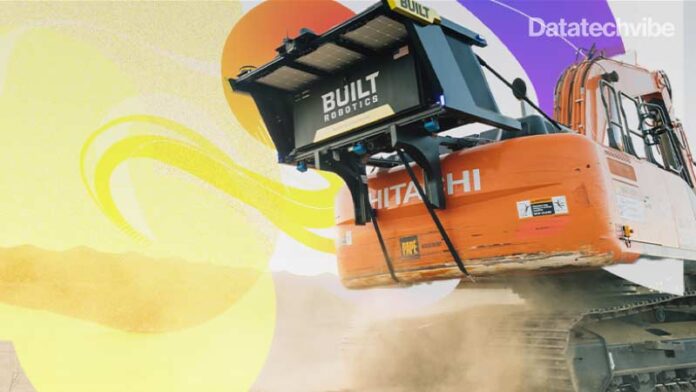Built Robotics, inventor of the Exosystem and leader in construction autonomy, is announcing the RPD 35: the fully autonomous solar piling system. With the RPD 35, utility-scale solar foundations can be constructed up to five times faster than traditional means and methods, bringing the nation closer to net zero energy.
Piling is a complex construction activity at the heart of every utility-scale solar project. Solar piles are generally steel H-beams 12 to 16 feet in length and up to 200 pounds in weight. A typical solar farm requires tens of thousands of piles to be installed, each of which must be driven into the ground upwards of eight feet and positioned at an accuracy of less than an inch. Together these piles form the structural foundation of the solar array.
The RPD 35 combines all the steps in the piling process — survey, pile distribution, pile driving, and inspection — into one package. With the RPD 35, a two-person crew can install over 300 piles per day, up to five times better than what’s possible today, all while hitting the most stringent tolerances on the market. This is achieved through Built’s construction AI software working in tandem with a custom pile cartridge system and advanced sensors like RTK GPS.
“Solar piling is a tough, repetitive job, one well suited to automation,” said Noah Ready-Campbell, founder and CEO of Built Robotics. “Our piling robots will dramatically improve the efficiency of workers on job sites, which is critical in the chronically tight construction labour market. And just as importantly, they will take people out of harm’s way, reducing noise exposure, strain, struck-by and pinch hazards.”
Built has a successful track record of developing robots for the solar industry, with its first commercial deployment occurring in 2018. Since then, Built’s robots have helped to install over 2 GW of solar capacity across the country, enough to power over 400,000 homes.
At the same time, the solar industry has advanced rapidly, and with the passage of the Inflation Reduction Act of 2022, federal incentives have accelerated the solar buildout even faster. In 2022, about 10 GW of utility-scale solar capacity was installed in the US, and by 2030 projections show over 100 GW will be installed each year. This rapid solar ramp-up is essential for the US to hit its climate objectives, and it will only be possible through automation and other advanced technologies.









